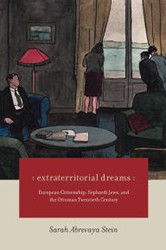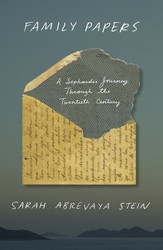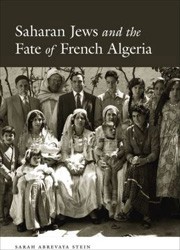Sephardi Lives presents the reader with an outstanding collection of primary documents portraying a broad spectrum of experience in the lives of the Judeo-Spanish population expelled from the Iberian peninsula during the late fourteenth and fifteenth centuries. In contrast to other documentary histories, this compilation focuses not only on the political, the famous, and the infamous, but also on the everyday affairs of the people. It highlights elements as diverse as children’s lessons, diary entries, a woman’s grievances in the face of eviction, and the laments of Jewish conscripts in the Ottoman army. It recounts criticism of women singing on the Sabbath, expressions of hope for the redemption, memories of Holocaust survivors, and pleas for the study of Ladino in Mexico.
Highlighting major regional and world events and the manner in which Sephardim interacted with the surrounding populace (both Jewish and non-Jewish), these documents give the reader insights into the Sephardic world. The appointment of the new Chief Rabbi of the Ottoman Empire (Rabbi Haim Nahum Effendi) and the subsequent dismissal of the parochial rabbis who had prevailed for so many generations aroused both acclaim and harsh criticism. With the development of the Zionist movement and the creation of the State of Israel, the Sephardim detected a persistent discrimination, noting that “the government and the Histadrut, two distinct organizations, have joined forces in order to exclude Mizrahi Jews as well as Sephardi Jews from civic leadership and from any national administrative positions.”
Conflict lay not only between Ashkenazim and the Sephardim; disputes arose among the Sephardim themselves. When the creation of a World Sephardi Federation was under discussion by Sephardi leaders in the early decades of the twentieth century, some — for example, the chief Sephardi Rabbi Benzion Meir Uziel (1880 – 1953) — fought vigorously for the creation of the organization. Others, among them the Yugoslav Rabbi Isaac Alcalay (1882−1978) (later to become a prominent figure among the Sephardim in America) were ambivalent.
Rich and heterogeneous, this wonderful compilation is an outstanding endeavor to preserve a history and culture that might otherwise be lost. With notes and extensive index, Cohen and Stein’s collection of documents are essential to the study of the Sephardim, and to the understanding of culture and its synthesis.
Related content:
- Reading list on Sephardic Jewry
- Reyna Simnegar: Sephardim Strike Back!
- Doreen Carvajal: Hunting Family Ghosts





